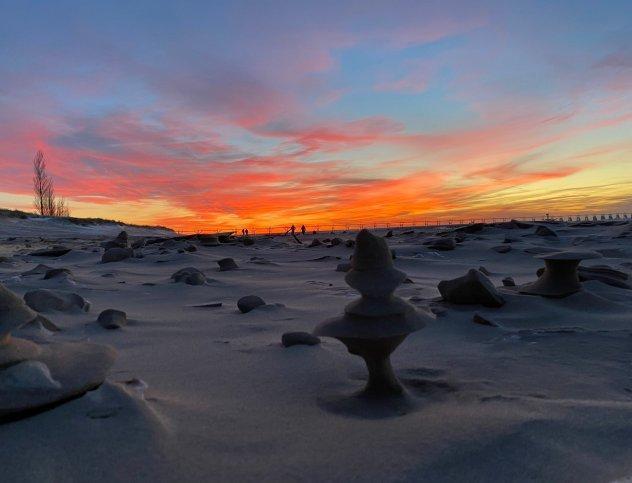‘It was like a different planet’: Wild spectacle forms amid precise weather conditions–
On the shores of Lake Michigan this week, an otherworldly sight had those who witnessed it in awe — and it was all thanks to just the right mix of weather.
The following written content via Monica Danielle
A walk along Lake Michigan this week was a lot like a stroll through a museum gallery thanks to some weather elements coming together to create an incredible phenomenon. Small, delicate sand sculptures casually littered the beach at Tiscornia Park in St. Joseph, Michigan.
“It was like a different planet,” Terri Abbott told Fox 2. “I’ve never seen anything like them, and I spend a lot of time there!” Tiscornia Park is on the southeastern shore of Lake Michigan, about 190 miles west of Detroit.

Photographer Joshua Nowicki has taken many incredible photos of the phenomenon and other beautiful winter scenes in the Midwest and says the sculptures are a fleeting creation of nature.
“They do not last very long. The wind completely erodes them or knocks them down. If the temperature goes up above freezing they crumble, and often in the winter, they soon get covered by drifting snow,” Nowicki told Colossal. The sculptures this year are the biggest he’s ever seen with the largest being about 15 inches tall.
The otherworldly phenomenon is caused when a combination of weather elements occurs simultaneously: wind, cold and snow or rain. The wind erodes the frozen sand, which is slightly wet from precipitation then the cold air holds the delicate shapes in place.
Alan Arbogast, the chair of the Geography Department at Michigan State University who also studies the state’s dunes, explained to Fox 2 how the sand formations are created just like a sculptor chisels away at stone until a form emerges.
“I imagine what happened is that the sand is frozen. Then, we had a big storm roll through a couple weeks ago with strong winds. The wind blew along the beach and blasted out the areas that were a little less frozen,” he explained. “Those things aren’t being built up. Everything around the features that are standing up was eroded from it. Those are the things that are left behind.”
Like much of the country, parts of Michigan experienced cold weather and brutal winds in early January, making for perfect conditions for the phenomenon to occur. Brutally cold air from the Arctic made its way through the North Central states and into the Northeast.
The gusty conditions across portions of the Midwest led the outside air to feel even colder than the thermometer reading as AccuWeather RealFeel® Temperatures dipped below zero at times across northeastern Iowa, northern Illinois and central Michigan. AccuWeather forecasters say Tuesday was the coldest day of the winter so far in the region. The high on Monday was 20 degrees Fahrenheit with a low of 15 degrees. Overnight into Tuesday, the temperature dropped as low as 11 degrees Fahrenheit.
The average high temperature for this time of year in St. Joseph is 34, with the low bottoming out at 20, on average, according to the latest 30-year climate normals. Meanwhile, lake water temperatures have been running above normal this winter across the Great Lakes, with Lake Michigan’s water temperature 1.1 degrees above average as of this week. Read more from AccuWeather.
Here’s a video, for your interest:





